| Apart from Lymantria
ninayi, other moths have been recorded in large
numbers defoliating Pinus: Lymantriidae
moths like Lymantria rosa,
L. novaguinensis, L. flavoneura, Calliteara
queenslandica, Dasychira mendosa, some Saturniidae
moths of the genus Syntherata, the Anthelidae moth
Anthela ekeikei, the bag or case moths Pteroma
plagiophleps and Cryptothelia sp. (Psychidae)
as well as Alcis papuensis and Paradromulia
nigrocellata (Geometridae). The cocoons or
pupal cases made by the caterpillars of some of these
species are shown below. Even though these species have
the potential to cause outbreaks, their numbers were
never high enough to cause severe problems as in the case
of Lymantria ninayi. An outbreak of Alcis
papuensis was confined to a smaller area and was
therefore less tragic in terms of monetary loss. The
small Alcis looper caterpillars bite each needle
at one side only, so that the needle either breaks or
hangs down and starts to wilt. When Alcis is
abundant, the tree looks brown from a distance due to the
many brown needles hanging from the tree. The lifecycle
of this moth takes five weeks. As in Lymantria, Alcis
populations are also affected by a Baculovirus. |
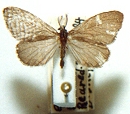 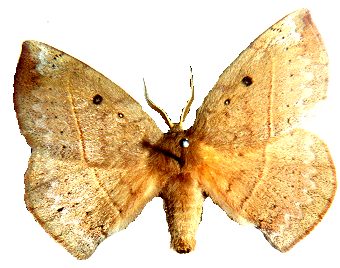 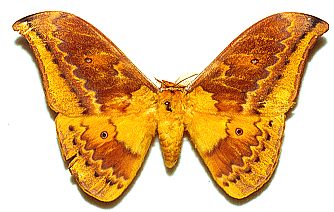 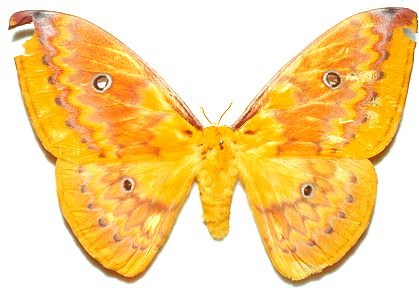 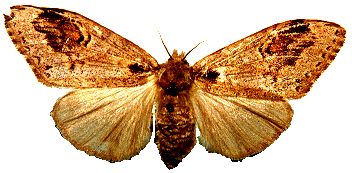 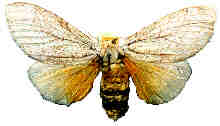 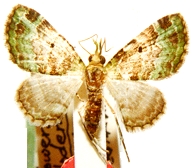 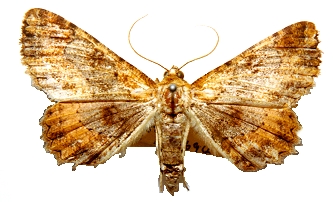
top row:
Pteroma plagiophleps
(Psychidae), Anthela ekeikei
(Anthelidae), Syntherata sp.
(Saturniidae); bottom row: Dasychira
mendosa (Lymantriidae), Calliteara
queenslandica (Lymantriidae), Alcis
papuensis (Geometridae),
Paradromulia nigrocellata
(Geometridae)
|






